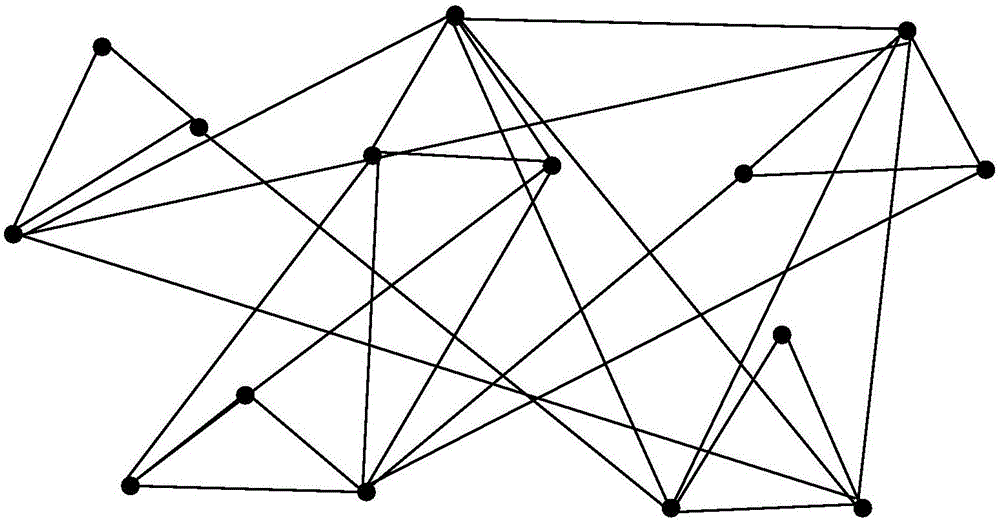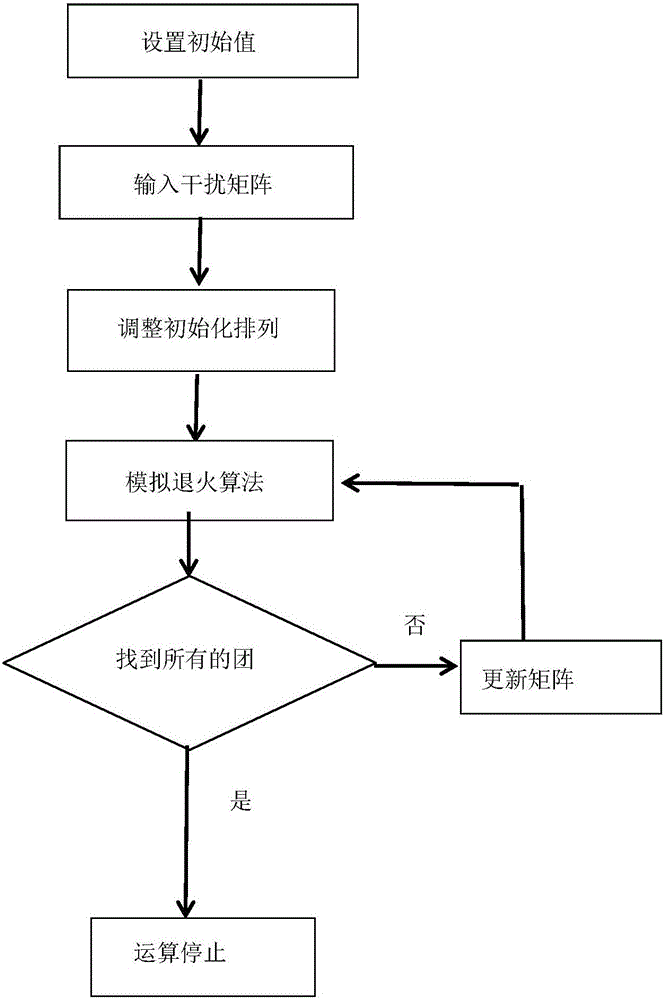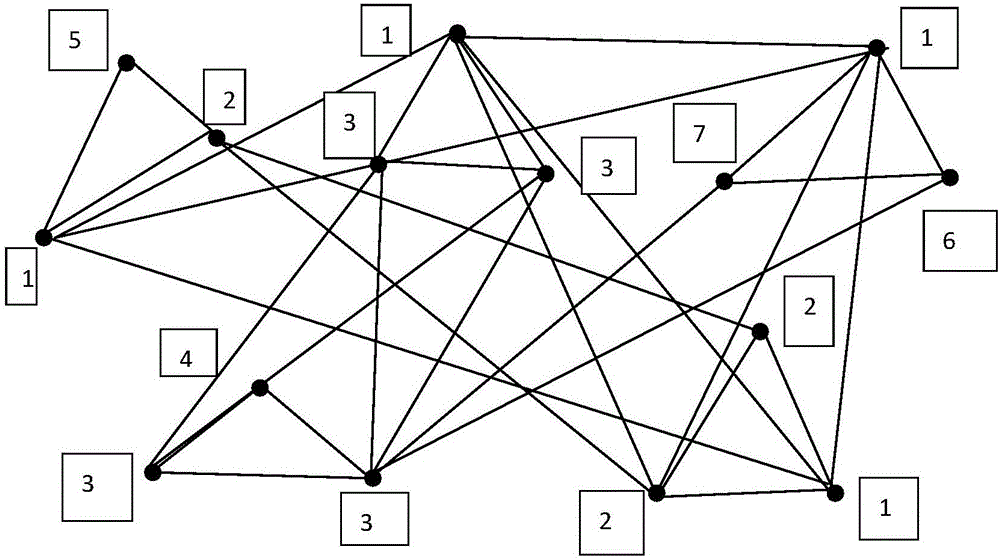Simulated annealing algorithm based frequency spectrum distribution method in super-dense small cell network
A simulated annealing algorithm and spectrum allocation technology, applied in network planning, electrical components, wireless communication, etc., can solve the problems of reduced spectrum utilization, inability to allocate spectrum, inappropriate spectrum allocation, etc., to improve the efficiency of spectrum allocation and improve practical The effect of operational significance and high practical research value
- Summary
- Abstract
- Description
- Claims
- Application Information
AI Technical Summary
Problems solved by technology
Method used
Image
Examples
Embodiment Construction
[0029] The present invention will be further described below in conjunction with accompanying drawing:
[0030] like figure 1 As shown, in the ultra-dense small cell network, the origin is used to represent the users in the cellular network covering each other, and each user calculates the relationship between the signal-to-noise ratio and the signal-to-noise ratio threshold, determines the interfering users, and constructs the interference matrix; according to The interference matrix connects the non-interfering users to construct the interference relationship graph G(V, E) between users.
[0031] like figure 2 As shown, the strategy of the present invention comprises the following steps:
[0032] {Initialization temperature, minimum temperature T 0 , the maximum temperature T s
[0033] Enter the cellular user interference matrix A G (a k,l ),
[0034] Calculate the objective function F(G,σ)
[0035] Arrange the vertices according to the dimension (the number of ed...
PUM
 Login to view more
Login to view more Abstract
Description
Claims
Application Information
 Login to view more
Login to view more - R&D Engineer
- R&D Manager
- IP Professional
- Industry Leading Data Capabilities
- Powerful AI technology
- Patent DNA Extraction
Browse by: Latest US Patents, China's latest patents, Technical Efficacy Thesaurus, Application Domain, Technology Topic.
© 2024 PatSnap. All rights reserved.Legal|Privacy policy|Modern Slavery Act Transparency Statement|Sitemap



